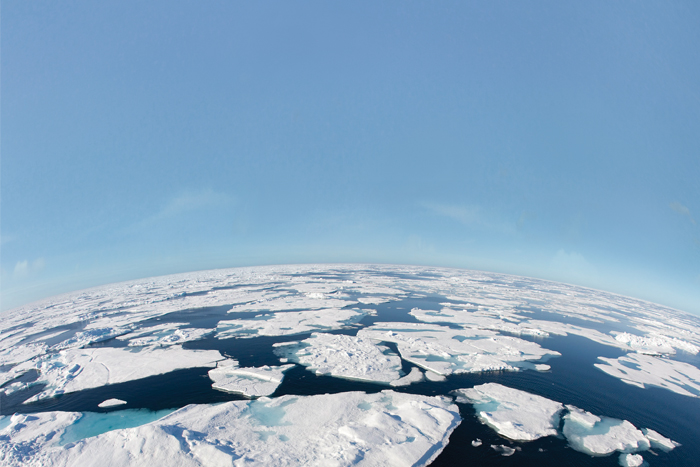How do you spend $486,919?

AP Photo/THE CANADIAN PRESS/Jonathan Hayward
by Tony Moore
Well, it depends on how much good you want to do.
When Dickinson received a grant for that amount through NASA’s Global Climate Change Education initiative in 2009, the idea was to invest it in one of the things Dickinson does best: injecting sustainability into the curriculum—in this case by creating a program called Cooling the Liberal Arts Curriculum: A Campaign for Climate Change Education.
But if the grant were designed just to enhance Dickinson’s already muscular sustainability framework, about 2,300 students per year could feel the effects. So when Neil Leary, director of Dickinson’s Center for Sustainability Education, was putting together the grant proposal, he included four regional community colleges—Harrisburg Area (HACC) and Montgomery College (Md.)—as foundational elements. And it made perfect sense: Each has an articulation agreement with Dickinson, and together they serve about 100,000 students per year.
“Part of our interest and NASA’s interest is to promote teaching about climate change as widely as we possibly can,” says Leary, noting that these larger colleges are great conduits for disseminating climate-change information.
Also taking part were the Center for Climate System Research and the Earth Institute of Columbia University, and professors from dozens of colleges and universities participated in the program’s five workshops—such as the Changing Planet and Climate Modeling workshops—and 30 rigorous sessions within those workshops.
“The workshops helped me recognize that there are so many entry points to the discussion, because global climate change is so complex,” says HACC’s Kelly Matthews, professor of chemistry. “It involves science, politics, economics and engineering at every level of society.”
The complexity of the issue was parsed and examined during the grant’s four-year run—which ended in January with the Teaching About Climate Change workshop—but at the heart of Cooling the Curriculum was the simple goal of bringing awareness to the classroom and exploring how best to do it. One form this took was the creation or enhancement of 18 Dickinson courses, many of which displayed just how widely climate-change information can be integrated, such as Environment, Culture and Values; Globalization, Sustainability and Security; and Religion and Modern Culture. Outside the classroom, the NASA grant funded student research on Dickinson’s greenhouse-gas emissions and strategies to reduce them, as well as several research projects.
Associate Professor of Biology Tom Arnold and his students, for instance, took research trips to the Chesapeake Bay and Australia’s University of Queensland to study ocean acidification and CO2 levels in the atmosphere. Assistant Professor of Archaeology Maria Bruno and her students studied climate change and ancient agricultural production on Bolivia’s Taraco Peninsula, and the grant also supported development and implementation of the Global Climate Change Africa Mosaic.
What all this does is get the conversation started on a large scale, across disciplines that might be left out of the discussion. And it’s the discussion, the process of raising awareness where it other- wise might not be raised, that ends up driving the issues forward.
“Instead of being leery of teaching something you don’t know all the answers to, just initiate the discussion with your students,” Matthews says. “Show them that it’s okay not to know everything, but [they should] always be looking to learn more and be open to discussions. Do something, no matter how big or how small.”
Read more from the spring 2014 issue of Dickinson Magazine.
Published April 22, 2014